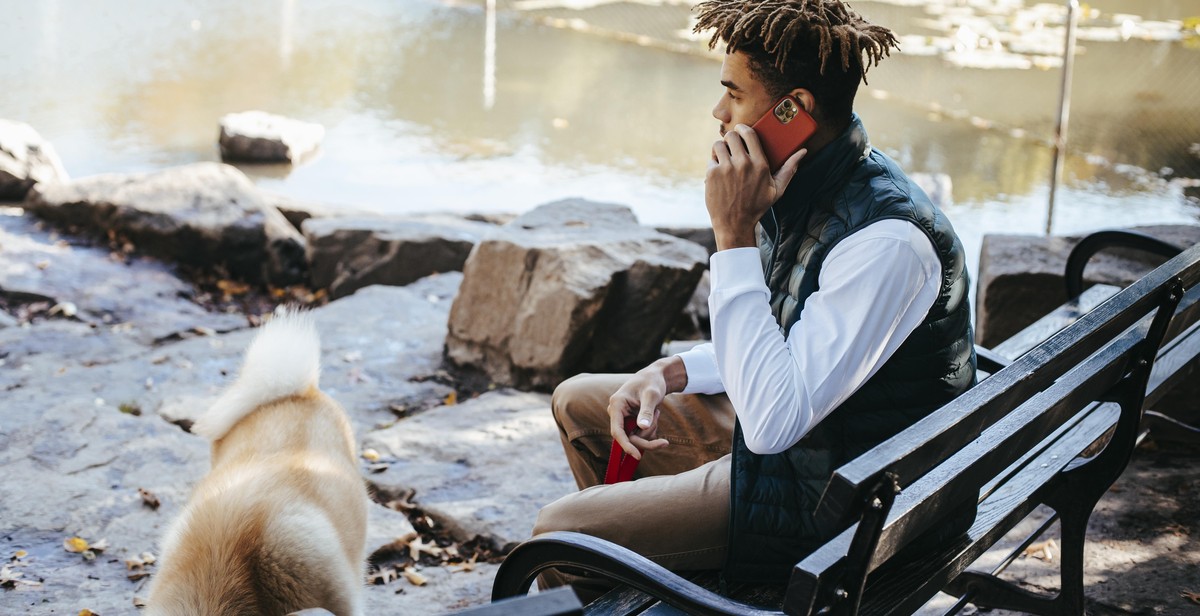How to Teach Your Dog Basic Commands
Teaching your dog basic commands is one of the most important things you can do as a pet owner. Not only does it ensure your dog’s safety and well-being, but it also strengthens the bond between you and your furry friend.
Why is it important to teach your dog basic commands?
First and foremost, basic commands such as “sit,” “stay,” and “come” can help keep your dog safe in potentially dangerous situations. For example, if your dog is about to run into a busy street, a well-trained “come” command could prevent a tragedy.
Furthermore, teaching your dog basic commands can make your life as a pet owner much easier. Dogs who know basic commands are easier to manage and are less likely to exhibit problem behaviors such as jumping on guests or chewing on furniture.
Finally, training your dog can be a fun and rewarding experience for both you and your pet. Dogs love to learn and please their owners, so teaching them new skills can be a great way to bond and strengthen your relationship.
Overall, teaching your dog basic commands is an essential part of responsible pet ownership. In the following sections, we’ll discuss some tips and tricks for effectively teaching your dog these important skills.

Command 1: Sit
Teaching your dog basic commands is one of the most important things you can do to ensure a happy and harmonious relationship with your furry friend. One of the most essential commands is “sit.”
Why teach your dog to sit?
Teaching your dog to sit serves several purposes. First, it is a basic obedience command that can help you maintain control over your dog in a variety of situations. For example, if your dog is jumping on guests or running out the front door, a quick “sit” command can help you regain control.
Second, teaching your dog to sit can also be a useful tool in managing your dog’s behavior. For example, if your dog is barking excessively or becoming too excited, a “sit” command can help calm them down.
Finally, teaching your dog to sit is a great way to bond with your pet and establish yourself as the pack leader. Dogs are social animals that crave structure and leadership, and teaching them basic commands like “sit” can help fulfill those needs.
How to teach your dog to sit
Teaching your dog to sit is relatively simple and can be done in just a few steps:
- Start by holding a treat close to your dog’s nose.
- Slowly move the treat up and back over your dog’s head. As your dog follows the treat with their nose, their butt should naturally lower to the ground.
- As soon as your dog’s butt hits the ground, say “sit” and give them the treat.
- Repeat this process several times a day until your dog starts to sit on command.
- Once your dog has mastered the “sit” command with the treat, try phasing out the treat and using only the verbal command.
Remember to be patient and consistent when teaching your dog to sit. With a little practice and positive reinforcement, your furry friend will be sitting like a pro in no time!

Command 2: Stay
Teaching your dog the “stay” command is essential for their safety and your convenience. This command prevents your dog from running off or getting into dangerous situations. It also allows you to keep your dog in one place while you attend to other tasks.
Why Teach Your Dog to Stay?
Teaching your dog to stay can be crucial in many situations. For example, if you are crossing a busy street, you can command your dog to stay on the sidewalk until it is safe to cross. Similarly, when you have visitors over, you can command your dog to stay in a designated spot to avoid jumping or barking at them.
How to Teach Your Dog to Stay
Start by commanding your dog to sit. Once they are in a sitting position, hold your hand out in front of you, with your palm facing towards your dog and say “stay.” Step back a few feet, and if your dog stays in the sitting position, reward them with a treat and praise. Gradually increase the distance and time you ask your dog to stay.
It is essential to be patient with your dog and not to rush the process. Start with a few seconds and gradually increase the duration. If your dog moves from the sitting position, calmly put them back into the sitting position and start again.
Consistency is key when teaching your dog to stay. Use the same command every time, and practice in different environments and distractions. Once your dog has mastered the “stay” command, you can incorporate it into other training exercises and daily routines.
| Do’s | Don’ts |
|---|---|
|
|

Command 3: Come
Teaching your dog to come when called is one of the most important commands you can teach them. It can keep them safe in dangerous situations and prevent them from running away. It also helps build a strong bond between you and your dog.
Why teach your dog to come?
Teaching your dog to come when called is essential for their safety. If they are running towards a busy road or a dangerous situation, being able to call them back can prevent accidents and save their life. It can also prevent them from getting lost or stolen. Additionally, teaching them to come on command can make it easier to take them to the vet or groomer, as well as making it easier to enjoy outdoor activities together.
How to teach your dog to come
Start by calling your dog’s name in a happy and excited tone. When they come towards you, reward them with a treat and praise them. Repeat this several times until they start to associate their name with positive reinforcement.
Next, add the command “come” as you call their name. Again, reward them when they come to you and praise them. Practice this in a quiet and distraction-free environment first, then gradually add distractions and practice in different locations.
It’s important to always reward your dog when they come to you, even if it takes them a while to get there. Never punish them for not coming, as this can make them reluctant to obey the command in the future.
Consistency and patience are key when teaching your dog to come. Make sure to practice regularly and always reward them for their good behavior.
Here’s a table summarizing the steps to teaching your dog to come:
| Step | Description |
|---|---|
| 1 | Call your dog’s name in a happy tone |
| 2 | Reward them with a treat and praise when they come to you |
| 3 | Add the command “come” as you call their name |
| 4 | Practice in a quiet and distraction-free environment |
| 5 | Gradually add distractions and practice in different locations |
| 6 | Always reward good behavior and never punish |

Command 4: Down
Teaching your dog to lie down is an essential command that can help prevent unwanted behavior such as jumping on guests or running out the door. This command also promotes relaxation and can be helpful in situations where your dog needs to stay calm.
Why Teach Your Dog to Lie Down?
The “down” command is an excellent way to help your dog stay calm and relaxed in various situations. It also helps to build trust and respect between you and your furry friend. Teaching your dog to lie down can also be helpful in situations where you need to keep your dog in one place for an extended period.
How to Teach Your Dog to Lie Down
The first step in teaching your dog to lie down is to choose a quiet and distraction-free area. Once you have found the perfect spot, follow these steps:
- Start by commanding your dog to “sit.”
- Hold a treat in front of your dog’s nose and slowly move it towards the ground.
- As your dog follows the treat, say “down” in a calm and firm voice.
- When your dog is lying down, give them the treat and praise them.
- Repeat this process several times a day until your dog responds to the command without the treat.
It is essential to remain patient and consistent when teaching your dog to lie down. Practice this command regularly until your dog responds to it reliably. Once your dog has mastered the “down” command, you can start to use it in real-life situations.

Command 5: Leave it
Teaching your dog the “leave it” command is essential for their safety and well-being. Dogs are naturally curious creatures and tend to investigate everything they come across, including potentially harmful objects or substances. The “leave it” command can prevent your dog from ingesting something toxic or dangerous, such as medication, dangerous foods, or even garbage.
Why teach your dog to leave it?
The “leave it” command can also be useful when your dog encounters other dogs or people on walks. If your dog tends to be reactive or aggressive, using the “leave it” command can help you redirect their attention and prevent unwanted behavior.
How to teach your dog to leave it
Start by holding a treat in your closed fist and presenting it to your dog. When they start to sniff or paw at your hand, say “leave it” in a firm but calm voice. Wait for a few seconds until they stop trying to get the treat and then reward them with a different treat from your other hand. Repeat this exercise several times until your dog learns to associate the “leave it” command with stopping their behavior.
Once your dog has mastered leaving a treat in your hand, you can move on to other objects, such as toys or household items. Gradually increase the difficulty level by placing the object closer to your dog or using more tempting items. Practice the “leave it” command in different environments, such as the park or on walks, to help your dog generalize the behavior.
Tips for success
- Always use positive reinforcement, such as treats and praise, to encourage your dog’s good behavior.
- Be patient and consistent in your training. It may take several weeks or months for your dog to fully understand the “leave it” command.
- Never punish your dog for not obeying the command. Instead, go back a few steps and practice with easier objects or in a less distracting environment.
| Do’s | Don’ts |
|---|---|
| Use a firm but calm voice when giving the “leave it” command. | Yell or scream at your dog if they don’t obey the command. |
| Reward your dog with treats and praise when they obey the command. | Use punishment or physical force to make your dog obey the command. |
| Practice the “leave it” command in different environments to help your dog generalize the behavior. | Expect your dog to obey the command perfectly every time. |

Conclusion
Teaching your dog basic commands is not only important for their safety, but it also helps to strengthen the bond between you and your furry friend. By investing time and effort into training, you can ensure that your dog is well-behaved and obedient, making them a joy to be around.
Recap of the Importance of Teaching Your Dog Basic Commands
- Basic commands provide safety and security for your dog and those around them.
- Training can help to prevent behavioral issues, such as aggression and destructive chewing.
- It strengthens the bond between you and your dog, allowing for better communication and understanding.
- Training can also provide mental stimulation for your dog, keeping them engaged and happy.
Remember to start with the basics and be patient with your dog. Consistency and positive reinforcement are key to successful training. Don’t forget to make it fun for both you and your furry friend!
| Basic Commands | Description |
|---|---|
| Sit | Teaches your dog to sit on command. |
| Stay | Teaches your dog to stay in one place until released. |
| Come | Teaches your dog to come to you when called. |
| Heel | Teaches your dog to walk calmly by your side. |
| Down | Teaches your dog to lie down on command. |
Overall, teaching your dog basic commands is a worthwhile investment that will benefit both you and your furry friend in the long run. Happy training!
